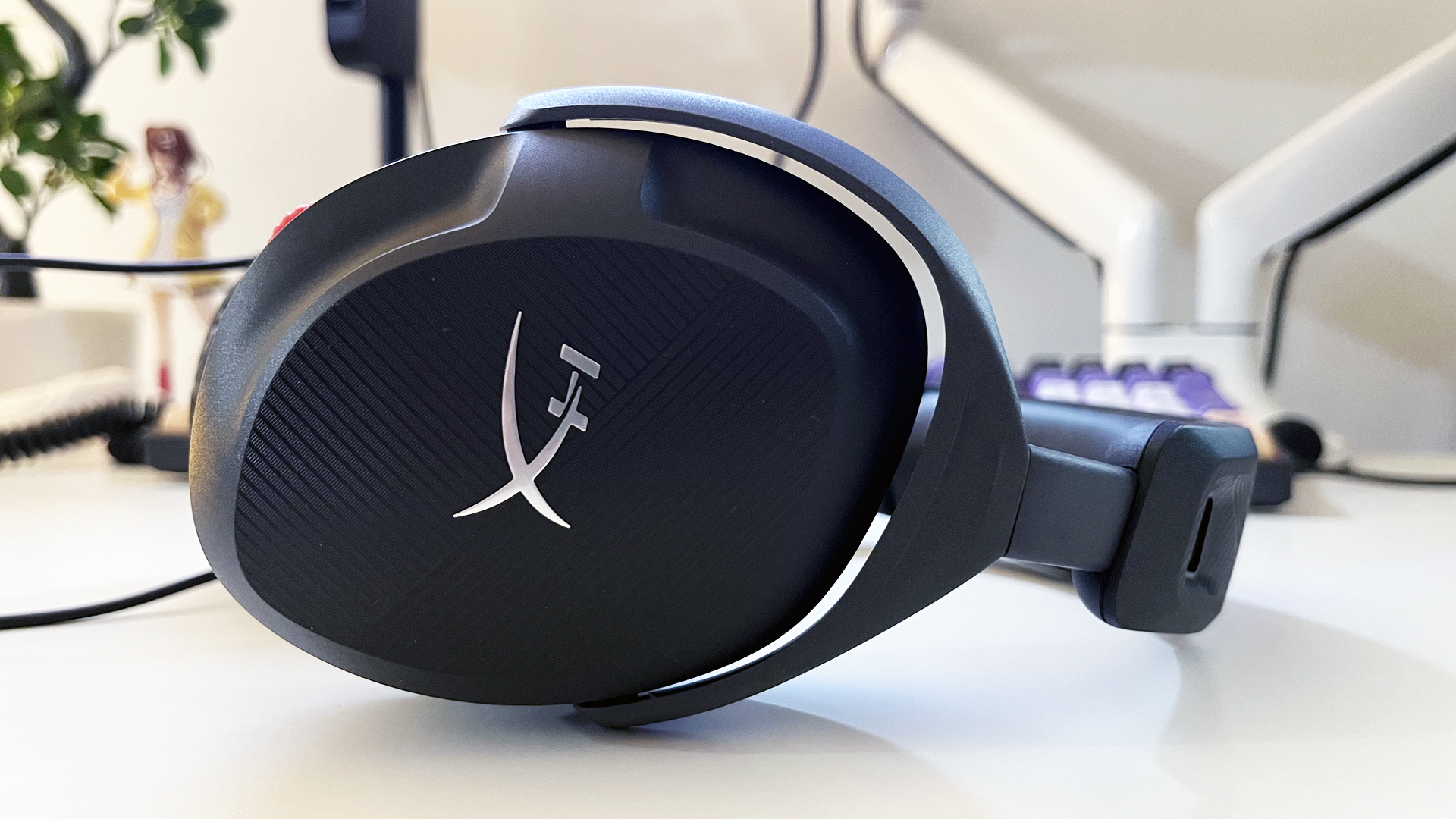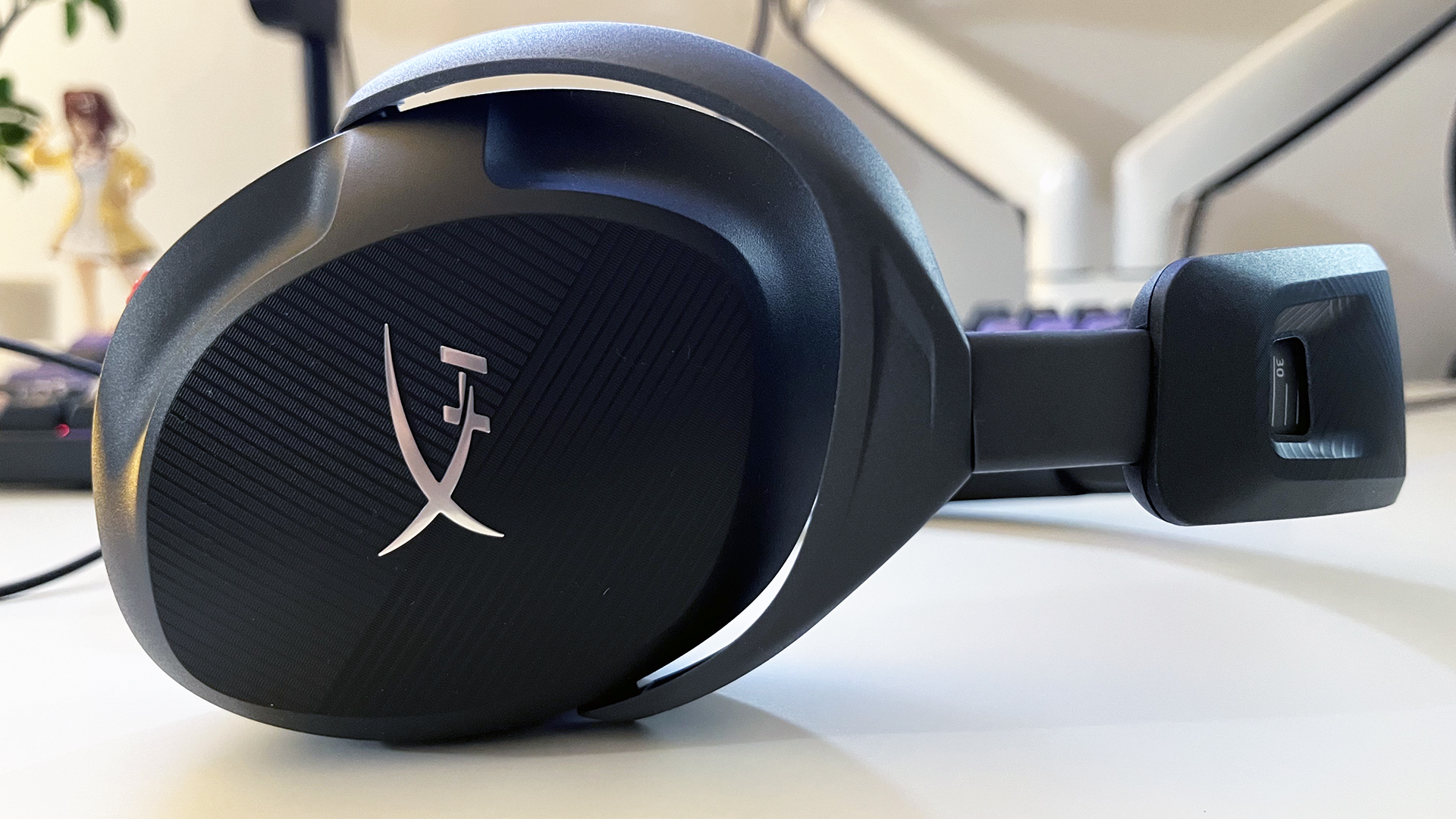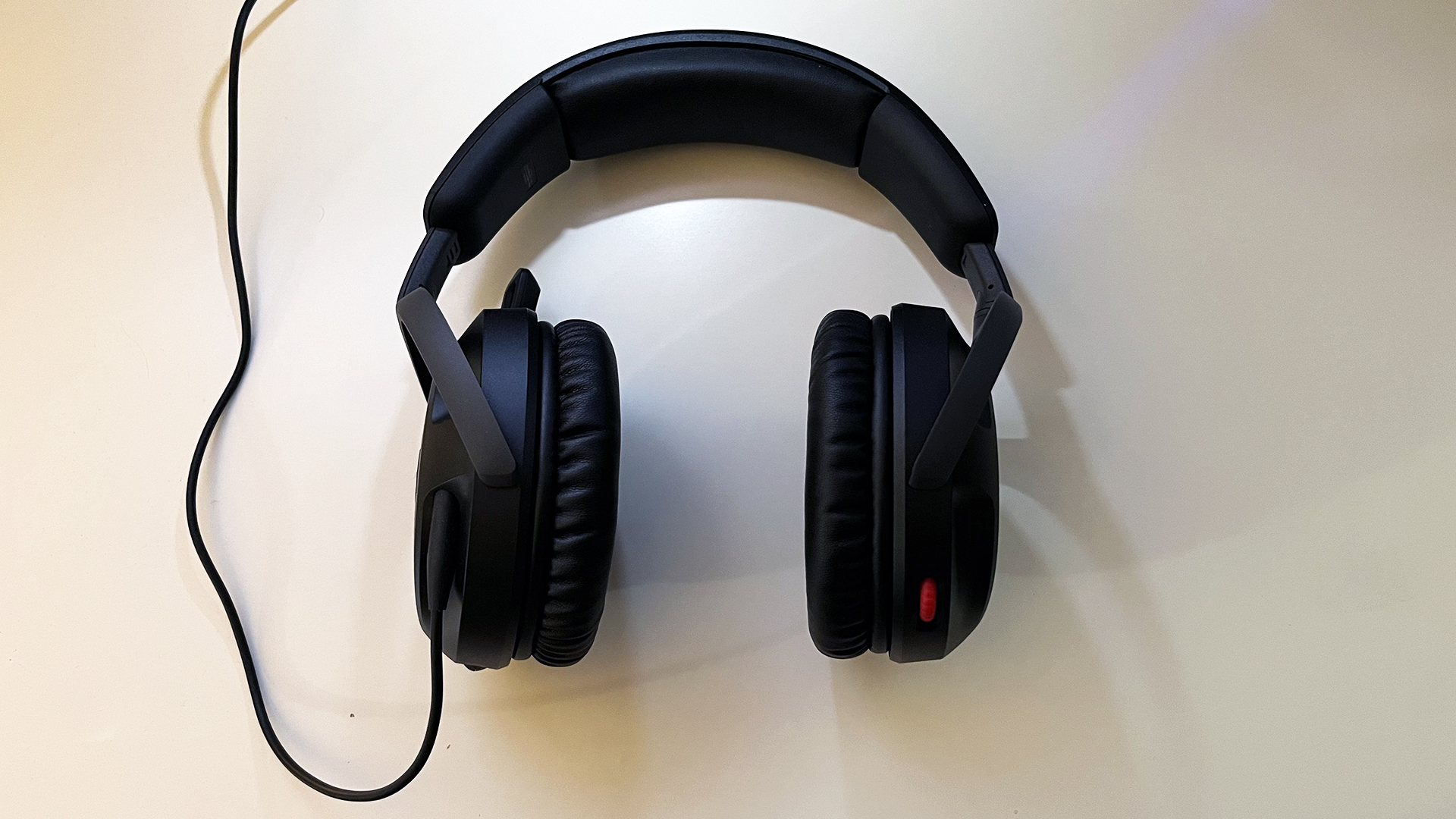Our Verdict
The HyperX Cloud Stinger 2 is a confusing follow up to its predecessor. It brings strong audio and microphone quality, but wraps it up in a flimsy design.
For
- Comfortable
- Impressive audio with DTS codec
- Strong noise-cancellation
Against
- Flimsy design
- Flat default audio
PC Gamer's got your back
In the race to cover every single available body part that can game in their gear, HyperX continues to release a flood of peripherals for all sorts of gamers. It's not just headsets and mice anymore—a month ago, the company released its first-ever gaming monitors. At this rate, HyperX is going to start making prescription glasses or those questionably useful gaming sleeves I see esports players swear by.
The HyperX Cloud Stinger 2 is almost inconsequential to how much other stuff HyperX has out there; legitimately good stuff like its wireless Cloud Alpha headset too. But the budget $50 price puts it in competition with headsets like the Razer Kraken X, the SteelSeries Arctis 1 and 3, and, frankly, its own predecessor, the Cloud Stinger (which retails for around $30).
The Cloud Stinger 2 is nearly identical in features to the first version of the headset. It's a black, all-plastic headset with a fairly lightweight microphone. It has a 10Hz to 28kHz frequency response, dynamic 50mm drivers with neodymium magnets, a 3.5mm headset jack, and an included splitter. It's the kind of $50 headset you pick up off of Amazon or a retail shelf because it's there and will get the job done but might leave you wishing you had done a little more research.
The worst part about the Cloud Stinger 2 is the headphone design, which nullifies many of its strengths in audio quality. It's a flimsy headset; the cheap plastic feel is normal at this price range—and probably not a worry if you've never owned headphones priced over $150—but this headset has bigger problems. The rotating earcups are intended to allow you to flatten it down so you can slip it into a bag, but they're attached to the thinnest part of the headband and are so loose that I'm afraid they'll break with a wrong move. They flap back and forth whenever I take them off and make grabbing them with one hand a pain.
Nothing catastrophic has happened to me, but some clumsy handling, and I worry the headbands could snap or crack with a particularly violent drop or twist. The thought of spending the next several years with them seems like more of a risk than it should be for this price.

Drivers: Dynamic, 50mm neodymium
Connectivity: 3.5mm wired
Style: Over-ear
Frequency response: 10Hz-28,000Hz
Features: Bi-directional, noise cancelling mic, audio dial
Weight: 275g
Price: $50
Otherwise the fit on these is great. They're snug enough to stay on my head as I move them around and slide off easily if, say, you're holding a burger in one hand. I'm a glasses wearer too, and it never got uncomfortable after hours of use, which I can't always say the same for my usual pair of Beyerdynamic DT 990 Pros, not far from the DT 900 Pro X. It has leatherette pads which feel a little thin and could wear or tear with time, but at this price range, I'm not sure you'll find much better.
The audio quality is impressive, especially if you have the included DTS Headphone X spatial audio codec turned on (a code for two years is included). It's a little gimmicky at first, but with music, I liked how it raised the mid-tones and made a lot of instrumental music sound dynamic, or like it was being played on a stage. It's probably not for everyone.
The effect in games didn't stand out to me. In a game like Overwatch where audio is essential and mixed with that in mind, it doesn't sound different with the feature on or off. Elden Ring sounded bigger, but not noticeably different than it would in normal stereo mode. The fact that after two years you have to pay for DTS Headphone X is a bummer too, as without it, the headphones are fairly neutral with highs pulling through more than anything else. They're fine for games, but might sound a little dull for everything else.




The microphone is about as serviceable as any other headset microphone in this price range. It sounds a little distant but has enough clarity and volume to come through over game audio. The noise-canceling kept out my mechanical keyboard taps and mouse clicks even while I was actively talking. The microphone arm swivels up and automatically mutes, which is always a nice feature, and it's small, so even when it's in front of your face, it's not a nuisance.
It's a little tragic that a solid audio package is held in such a crummy frame. The Cloud Stinger 2 would be a competent headset and an excellent choice for a budget pick, but I can't get over how fragile it looks and feels. There are older and cheaper headsets out there that are built with a thicker frame—the original Cloud Stinger, to name one.
The Stinger 2 might work for someone who treats their headset like a delicate flower, but for $50, you can get something that won't potentially be ruined after an accidental drop or twist. The Cloud Stinger 2, despite its strengths in the price range, is just too much of a risk for me to recommend.
The HyperX Cloud Stinger 2 is a confusing follow up to its predecessor. It brings strong audio and microphone quality, but wraps it up in a flimsy design.
Tyler has covered videogames and PC hardware for 15 years. He regularly spends time playing and reporting on games like Diablo 4, Elden Ring, Overwatch 2, and Final Fantasy 14. While his specialty is in action RPGs and MMOs, he's driven to cover all sorts of games whether they're broken, beautiful, or bizarre.

